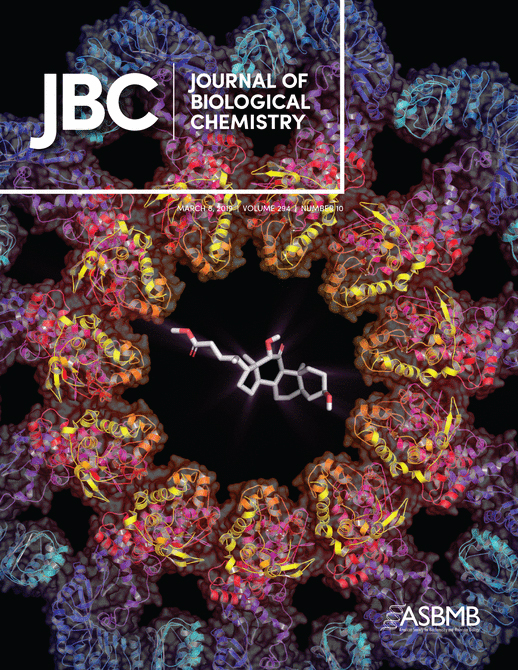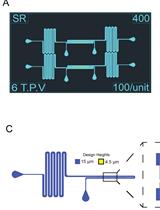- EN - English
- CN - 中文
Quantification of Mitochondrial Dynamics in Fission Yeast
裂殖酵母内线粒体动力学的定量研究
发布: 2019年12月05日第9卷第23期 DOI: 10.21769/BioProtoc.3450 浏览次数: 4899
评审: Juan Facundo Rodriguez AyalaSamantha E. R. DundonGunjan Mehta
Abstract
Mitochondria are double-membraned organelles responsible for several functions in the cell including energy production, calcium signaling, and cellular metabolism. An equilibrium between fission and fusion events of mitochondria is required for their proper functioning. Mitochondrial morphologies have been quantified in yeast using image processing modules such as MitoGraph and MitoLoc. However, the dynamics of mitochondrial fission and fusion have not been analyzed in these methods. Here, we present a method for measuring mitochondrial morphologies, as well as estimation of fission and fusion frequencies of mitochondria in individual fission yeast cells whose mitochondria are fluorescently-tagged or stained. The latter relies on counting of individual mitochondria upon signal filtering in each frame of a time-lapse. Taken together, we present a simple protocol for analyzing mitochondrial dynamics, which can easily be adopted to other model systems.
Keywords: Mitochondria (线粒体)Background
Mitochondria are essential organelles present in the form of tubular networks within cells and constantly undergo fission and fusion events throughout the cell cycle. The rate of fission and fusion events determine the morphology of the mitochondria and this is a crucial determinant of their function (Mishra and Chan, 2016). Several factors contribute to the changes in morphology of the mitochondria. For instance, mitochondrial fission can be induced by stress, metabolic state, aging and in certain diseases (Sprenger and Langer, 2019). On the contrary, mitochondrial fusion can be induced to enhance cellular respiration in starved conditions and to dilute the effects of damaged mitochondrial DNA that may be present inside the cell (Westermann, 2010). Additionally, mitochondrial dynamics can drastically vary between cell types depending on the metabolic need of the given cell type. Since mitochondrial dynamics and thereby form are direct readouts for mitochondrial and cellular function, it is imperative to accurately measure these properties.
Early quantification efforts involved the use of qualitative descriptors to assess diverse mitochondrial morphologies. In recent times, computational image processing algorithms are being used to robustly quantify the differences in mitochondrial morphologies. For instance, the image processing module ‘MitoLoc’ uses the 3D reconstruction and analysis software, ‘MitoMap’ (a plugin for ImageJ) to define an object using Otsu thresholding and then calculates mitochondrial fragmentation, condensation and tubularity using mitochondrial shape descriptors such as mitochondrial size, position and integrity to differentiate the diverse mitochondrial phenotypes in budding yeast (Vowinckel et al., 2015). MitoLoc calculates the fragmentation of mitochondria using a fragmentation index f, which is defined as the sum of relative fragment volumes that individually constitute less than 20% of the total mitochondrial volume. Another open-source image analysis platform named ‘MitoGraph’ has been employed to quantify mitochondrial morphology in both yeast and mammalian cells (Viana et al., 2015; Harwig et al., 2018).
MitoGraph is an automated image processing software which performs graph theory-based quantitative analysis of mitochondrial networks by calculating the volumes of three-dimensional organelles in living cells. For both of these modules to provide accurate morphological data, it is imperative to utilize the best practices for imaging mitochondria by using the most optimal mitochondrial markers as well as high resolution imaging techniques. However, both of these modules do not provide quantitative measurements for mitochondrial fission and fusion dynamics. Here, we detail a simple method for quantifying both mitochondrial morphologies, as well as fission and fusion dynamics.
Materials and Reagents
- Glass-bottom confocal dish, 35 x 10 mm, PP, Sterile (SPL, catalog number: 100350)
- Reusable Bottle Top Filter (Tarsons, catalog number: 50060)
- Membrane filter with 0.22 µm pore size (Millipore, catalog number: GSWP04700)
- Kimwipes disposable wipers (Sigma-Aldrich, catalog number: Z188956)
- Schizosaccharomyces pombe cells expressing fluorescently-labeled mitochondria or fission yeast cells stained with MitoTracker dye. Wild-type S. pombe cells can be obtained from National BioResource Project, Japan (https://nbrp.jp)
- Lectin from Bandeiraea simplicifolia (Sigma-Aldrich, catalog number: L3759), store at 2-8 °C
- Adenine (HiMedia, catalog number: TC082), store below 30 °C
- Histidine (HiMedia, catalog number: GRM050), store below 30 °C
- Leucine (HiMedia, catalog number: GRM054), store below 30 °C
- Uracil (HiMedia, catalog number: GRM264), store below 30 °C
- L- Lysine (HiMedia, catalog number: RM3028), store below 30 °C
- MitoTrackerTM Orange CMTMRos (Thermo Fisher, catalog number: M7510), store at -5 to -30 °C
- MgCl2·6H2O (HiMedia, catalog number: MB040), store below 30 °C
- CaCl2·2H2O (HiMedia, catalog number: MB034), store below 30 °C
- KCl (HiMedia, catalog number: GRM3934), store below 30 °C
- NaCl (HiMedia, catalog number: MB023), store below 30 °C
- Na2SO4 (HiMedia, catalog number: MB209), store below 30 °C
- Pantothenic acid (HiMedia, catalog number: CMS178), store at 2-8 °C
- Nicotinic acid (HiMedia, catalog number: CMS177), store below 30 °C
- Inositol (HiMedia, catalog number: GRM102), store below 30 °C
- Biotin (HiMedia, catalog number: TC096), store at 2-8 °C
- Boric acid (HiMedia, catalog number: MB007), store below 30 °C
- MnSO4 (HiMedia, catalog number: GRM1381), store below 30 °C
- ZnSO4·7H2O (HiMedia, catalog number: MB233), store below 30 °C
- FeCl2·6H2O (HiMedia, catalog number: GRM6353), store below 30 °C
- Molybdic acid (Sigma-Aldrich, 232084), store at room temperature
- KI (HiMedia, catalog number: GRM252), store below 30 °C
- CuSO4·5H2O (HiMedia, catalog number: GRM630), store below 30 °C
- Citric acid (HiMedia, catalog number: GRM1023), store below 30 °C
- Yeast extract (HiMedia, catalog number: RM027), store below 30 °C
- Glucose (Sigma-Aldrich, catalog number: G8270), store at room temperature
- Potassium hydrogen phthalate (HiMedia, catalog number: GRM2405), store below 30 °C
- Na2HPO4 (HiMedia, catalog number: MB024), store below 30 °C
- KH2PO4 (Sigma-Aldrich, catalog number: P5655), store at room temperature
- NH4Cl (HiMedia, catalog number: TC092), store below 30 °C
- Agar powder, bacteriological (Himedia, catalog number: GRM026), store below 30 °C
- NaOH
- Phosphate buffered saline (see Recipes)
- EMM: Edinburgh Minimal Medium with appropriate supplements (see Recipes)
- 50x Salt stock
- 1,000x Vitamin stock
- 10,000x Mineral stock
- YE: Yeast Extract with supplements (see Recipes)
Equipment
- Orbital shaking Incubator (Ascension Innovations, model: AI-100)
- Laser scanning (point/line) or spinning disk confocal microscope
We used the confocal mode of an InCell Analyzer 6000 (GE Healthcare) Imaging system with 60x/0.7 N.A. objective, fitted with an sCMOS 5.5MP camera having an x-y pixel separation of 108, and 405, 488, 561 and 640 nm laser lines - Standard vertical autoclave (Equitron, model: 7431STWL.AFE.113)
- Laminar airflow chamber
Software
- IN Cell Analyzer Acquisition Software v.4.6 (GE Healthcare) or any other confocal microscopy system-specific software
- Fiji/ImageJ (http://fiji.sc/Fiji, Schindelin et al., 2012)
- MATLAB software v. 2015b or above (MathWorks, https://in.mathworks.com)
Procedure
文章信息
版权信息
© 2019 The Authors; exclusive licensee Bio-protocol LLC.
如何引用
Readers should cite both the Bio-protocol article and the original research article where this protocol was used:
- Chacko, L. A. and Ananthanarayanan, V. (2019). Quantification of Mitochondrial Dynamics in Fission Yeast. Bio-protocol 9(23): e3450. DOI: 10.21769/BioProtoc.3450.
- Mehta, K., Chacko, L. A., Chug, M. K., Jhunjhunwala, S. and Ananthanarayanan, V. (2019). Association of mitochondria with microtubules inhibits mitochondrial fission by precluding assembly of the fission protein Dnm1. J Biol Chem 294(10): 3385-3396.
分类
细胞生物学 > 细胞成像 > 活细胞成像
细胞生物学 > 细胞成像 > 荧光
您对这篇实验方法有问题吗?
在此处发布您的问题,我们将邀请本文作者来回答。同时,我们会将您的问题发布到Bio-protocol Exchange,以便寻求社区成员的帮助。
提问指南
+ 问题描述
写下详细的问题描述,包括所有有助于他人回答您问题的信息(例如实验过程、条件和相关图像等)。
Share
Bluesky
X
Copy link














